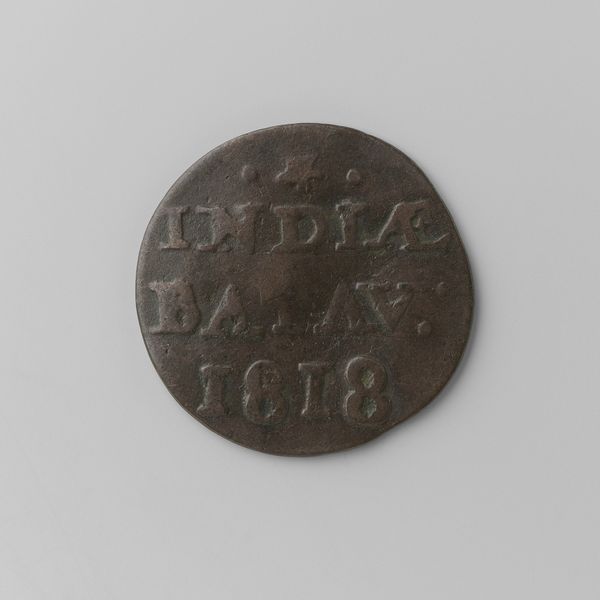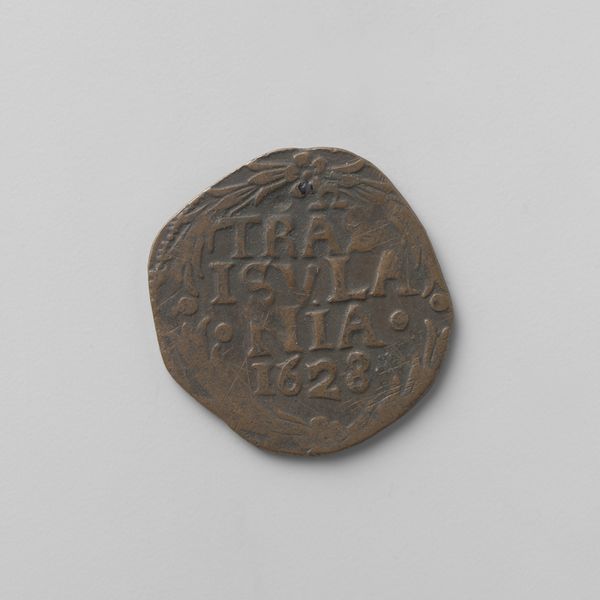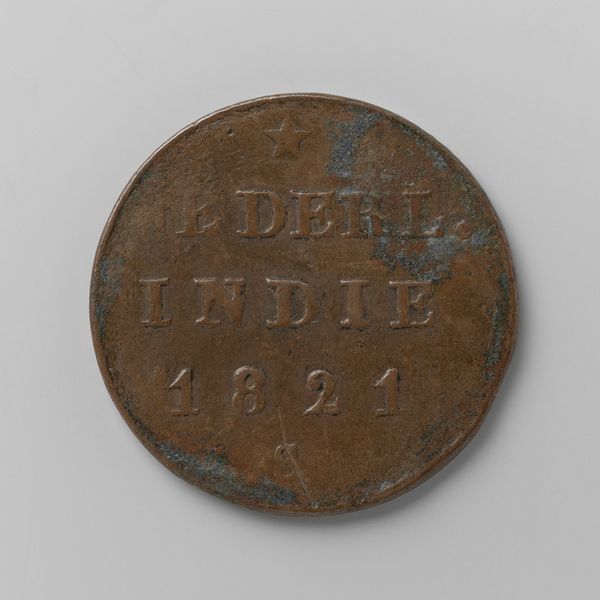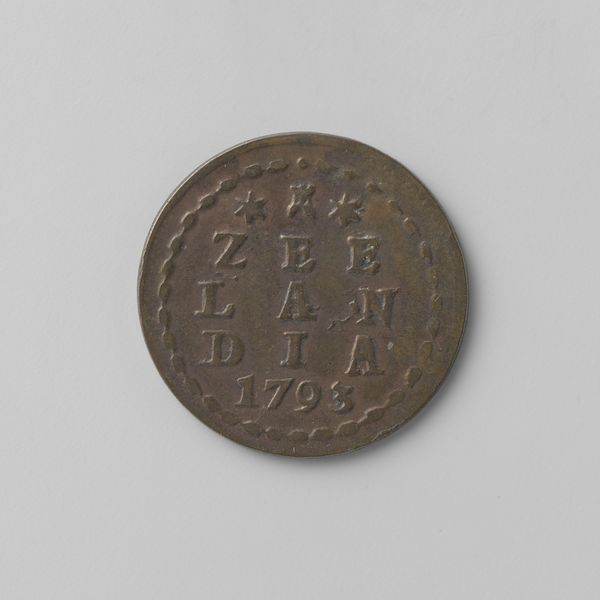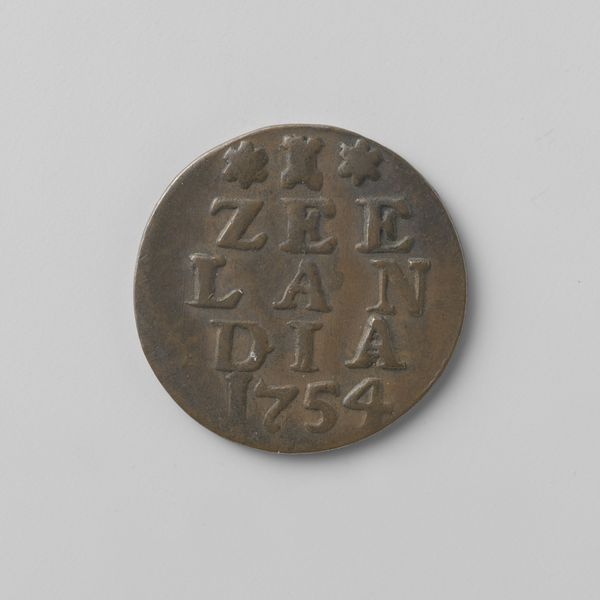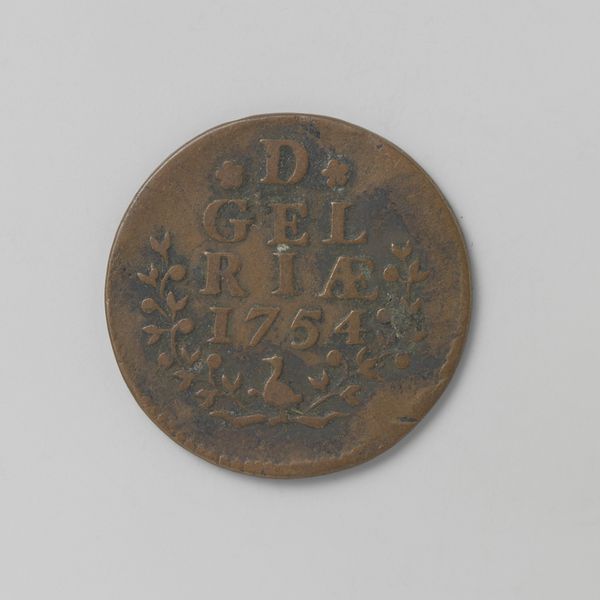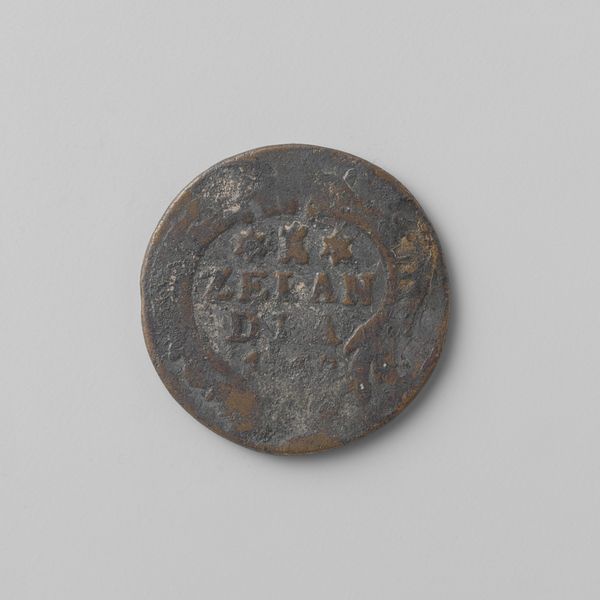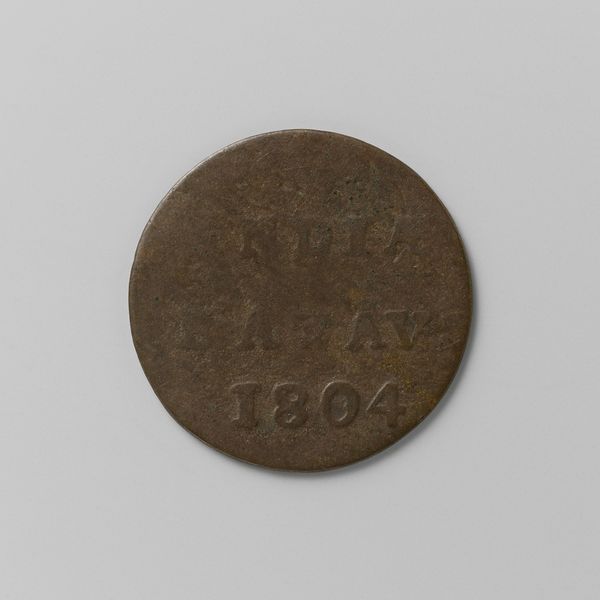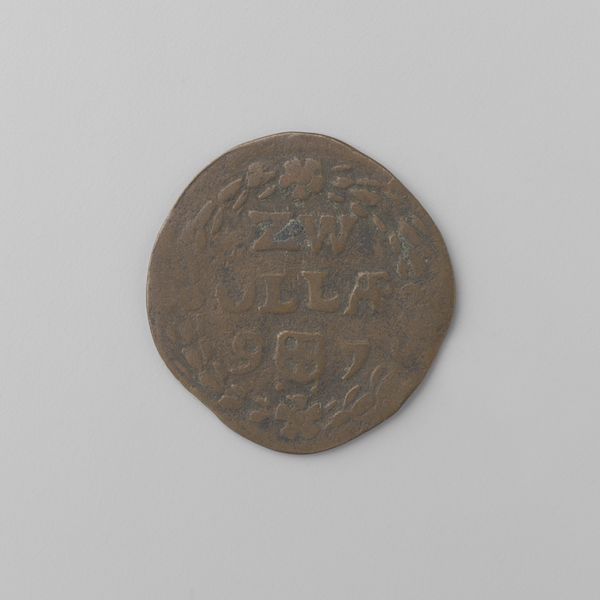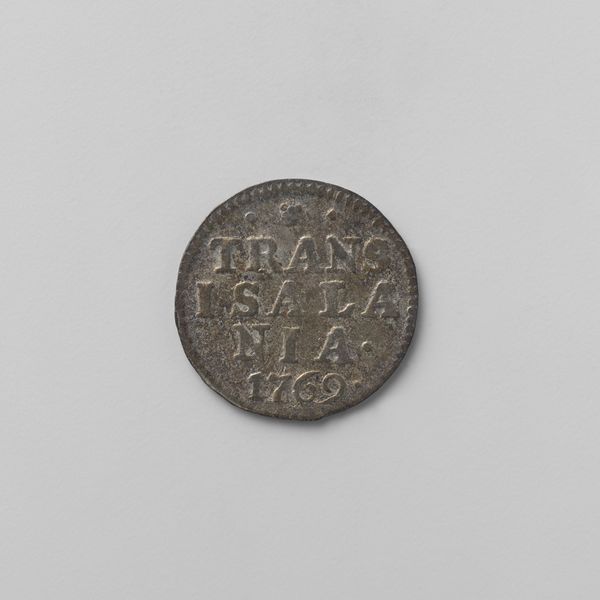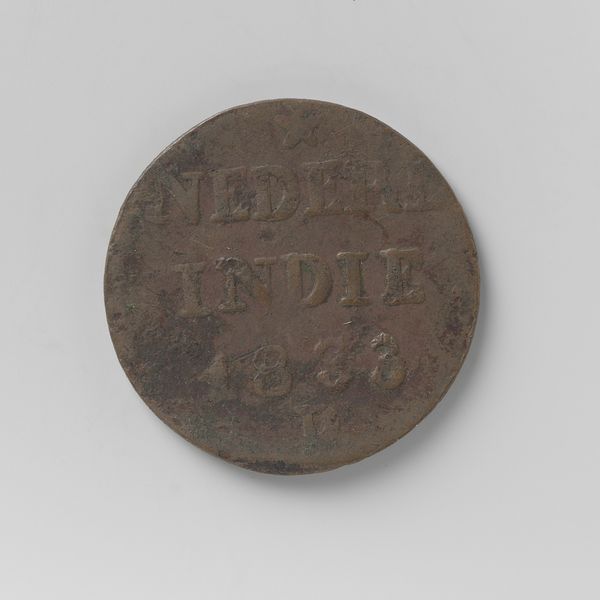
print, metal, sculpture
# print
#
metal
#
sculpture
#
ancient-mediterranean
#
sculpture
#
history-painting
Dimensions: diameter 2.8 cm, weight 5.43 gr
Copyright: Rijks Museum: Open Domain
This copper half-stuiver from the Dutch East Indies was minted in 1819 under the authority of King William I of the Netherlands. This coin embodies the complex relationship between the Netherlands and its colonial possessions in Asia. The inscription "India Batav" directly links the coin to the Dutch East India Company's presence, a powerful entity that extracted resources and labor from the Indonesian archipelago. Issued during a period of significant social upheaval in Europe and colonial territories, this coin speaks volumes about economic and political control. The coin itself served as a tool to facilitate trade but it also symbolizes the power dynamics of colonialism. Historians rely on sources such as colonial records and economic data to shed light on the function and implications of objects like this one. It serves as a reminder that art, even in the form of currency, is contingent on its social and institutional context.
Comments
No comments
Be the first to comment and join the conversation on the ultimate creative platform.
